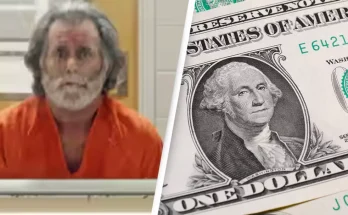He got into USC on a basketball scholarship
After graduating high school, Tom Selleck attended Los Angeles Valley College. During his junior year, he transferred to the University of Southern California on a basketball scholarship, where he played for the USC Trojans men’s basketball team.
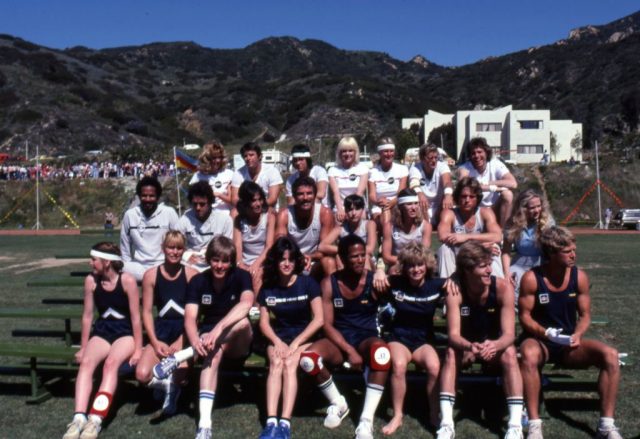
Speaking with GQ about that time in his life, Selleck says he had a tough time finding balance, “I never learned how to have fun and set aside time to study, and I wasn’t very motivated at USC. I was a basketball player, barely trying to stay eligible, and somehow got offered a contract to 20th Century Fox.”
Selleck’s career began with an appearance on The Dating Game and in commercials, before slowly starting to build his film career with smaller roles. This included the part of Stud in Myra Breckinridge, which he landed with a little help from famed starlet, Mae West.
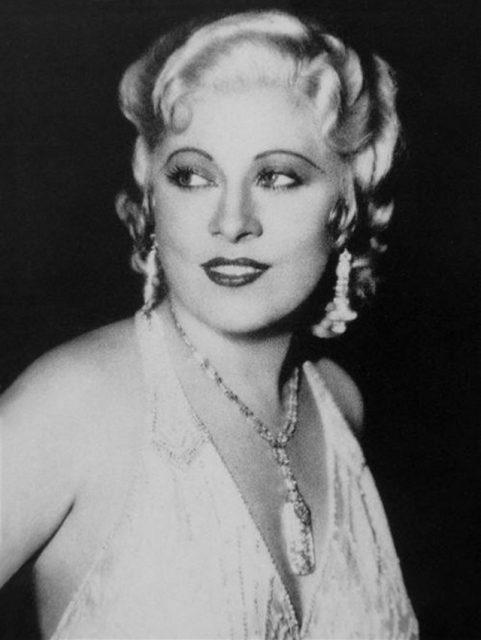
The film has definitely not held up over time, given the way it handles its subject matter, but for Selleck, it was his movie debut and helped afford him future acting opportunities, including in Coma and The Seven Minutes. It wasn’t until the 1970s that he began landing larger roles in both film and television.
He’s responsible for Magnum’s love of Hawaiian shirts
There are two key aspects to Thomas Magnum’s look: his mustache and his array of Hawaiian shirts. We’d claim the character helped put the Aloha shirts on the map, but what you might not know is that Tom Selleck actually came up with the idea for the famed P.I. to wear them.
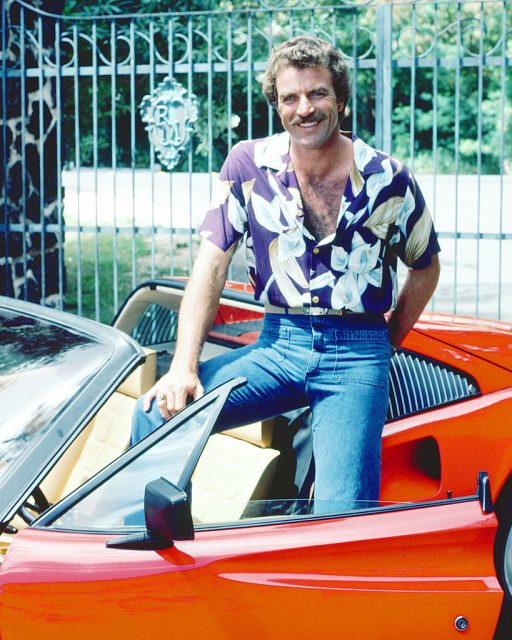
Selleck is no longer able to wear Hawaiian shirts in his personal life due to their association with Magnum, but we doubt he’s too concerned. We don’t take him as being the type of guy to wear the colorful vacation staple on the regular.
He served in the military
Selleck was drafted during the Vietnam War and joined the California National Guard, where he was placed in the 160th Infantry Regiment. He served from 1967 to 1973, during which he attended the California Military Academy. He was under contract with Fox at the time of his service, and returned to learn he’d been fired by the studio.
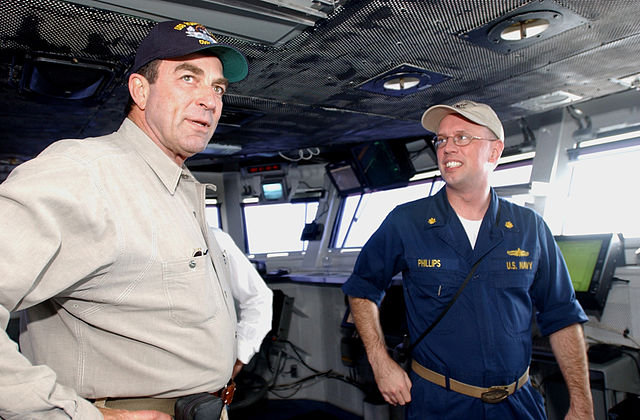
Nowadays, Selleck is used in promotional material for the California National Guard and has become a spokesperson for the Vietnam Veterans Memorial Fund. He has also appeared on recruitment posters for the California Military School.
He danced with Princess Diana
While John Travolta’s dance with Diana at the 1985 White House dinner is considered by many to be the highlight of the night, the Princess of Wales actually danced with other famed actors, including Tom Selleck. He described Diana as “just charming, lovely,” and admits he was nervous about their waltz.
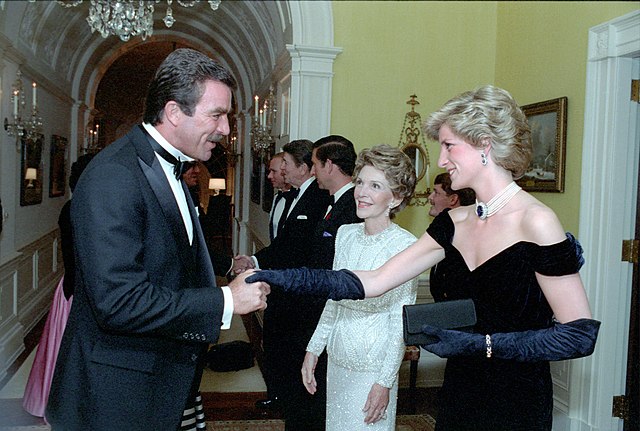
Another star to dance with the Princess was Clint Eastwood. However, he wasn’t as smooth with his moves. According to Selleck, the Dirty Harry star was out of his element and the dance was painful to watch.
He almost starred in the Indiana Jones film series
While it’s hard to imagine anyone but Harrison Ford playing the adventurous archaeologist, there was a point in time when Tom Selleck was cast as Indiana Jones. George Lucas had worked with Ford on films in the past and was looking for someone different, and Selleck’s audition tape caught his attention.
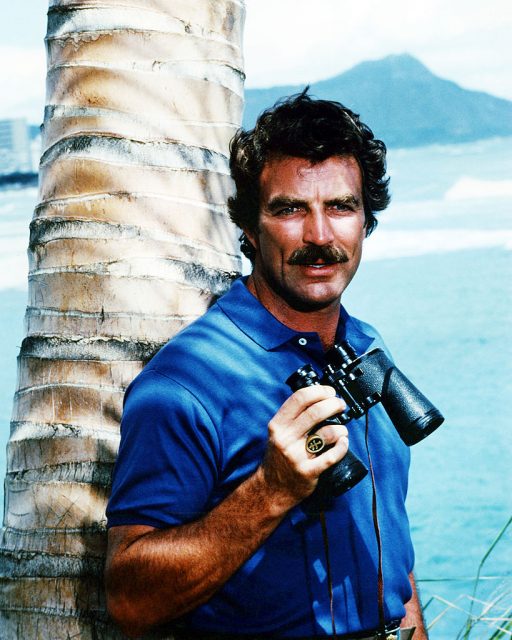
Ultimately, Selleck turned down the role due to his Magnum, P.I. commitments, so Steven Spielberg approached Ford to take over the role. The unfortunate thing is Selleck could have taken the role, as the actors’ strike put production of Magnum, P.I. on hold for six months. Hindsight certainly is 20/20.
He’s a volleyball champion
Is there anything Tom Selleck can’t do? Not only did he play basketball in college, but he later went on to play volleyball with the Outrigger Canoe Club in Honolulu while filming Magnum, P.I. He became an accomplished indoor and outdoor hitter, twice winning the over-35 division at the National Championships.
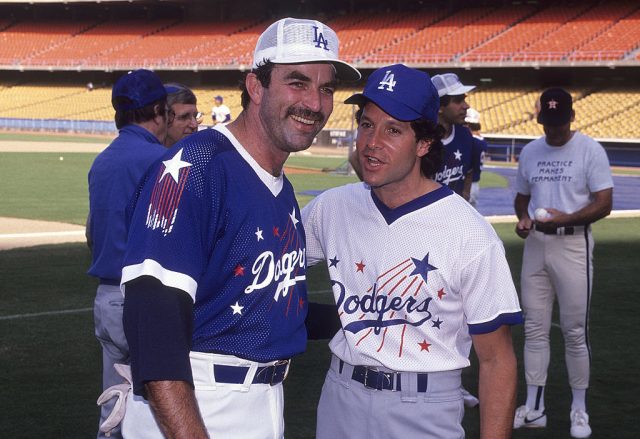
His skills on the court afforded him the opportunity of being named the honorary captain of the U.S. Men’s Olympic team in 1984. He even agreed to pose shirtless for a promotional poster after learning the proceeds of its sale would go to the athletes.
His mustache truly is iconic
Even those who don’t know Selleck by name recognize him by his mustache. It’s as iconic as the actor himself, so it’s no surprise it holds a coveted spot in the International Mustache Hall of Fame.
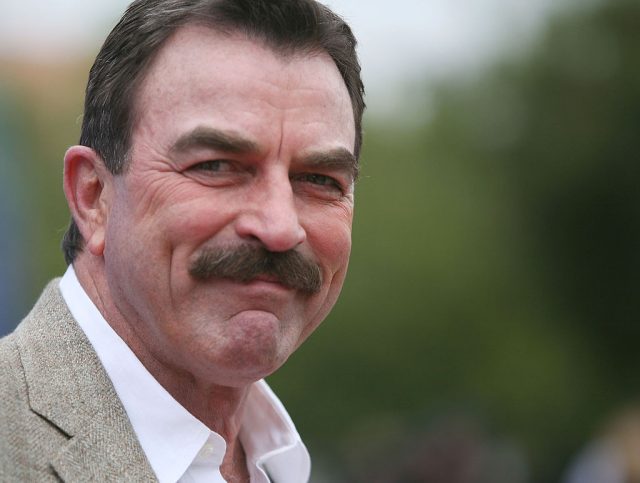
Selleck was part of the inaugural class in 2015, under the category of Film & Television. He joined a list of 27 individuals, including Hulk Hogan, Teddy Roosevelt and John Oates.
Oh, and before you ask: no, he doesn’t have a nickname for his mustache.
Avocado ranch living
When you’re as successful as Tom Selleck, you have your pick of where you want to live, so why not choose the ranch once owned by Dean Martin? While Selleck may not like avocados, he enjoys growing them and working outside, as it allows him to stay active without going to the gym.

The ranch did get him into a spot of trouble in 2015, after the Calleguas Municipal Water District accused him of stealing 1.4 million gallons of water and transferring it to the Hidden Valley Municipal Water District during California’s historic drought. He ended up settling the suit for $21,685.55, avoiding a trial while simultaneously not admitting any wrongdoing.
He doesn’t want to be a sex symbol
While many consider Selleck to be a 1980s sex symbol, he never actually set out to be one. In fact, he went so far as to turn down the role of Mitch Buchannon in Baywatch because of this.
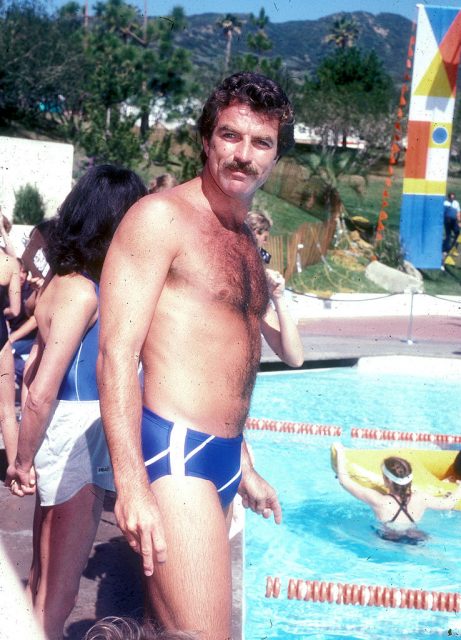
While it’s hard to imagine anyone but David Hasselhoff playing the iconic lifeguard, we wonder how Selleck would have pulled off the role. Even more important to consider is whether or not he’d have been allowed to keep his mustache.
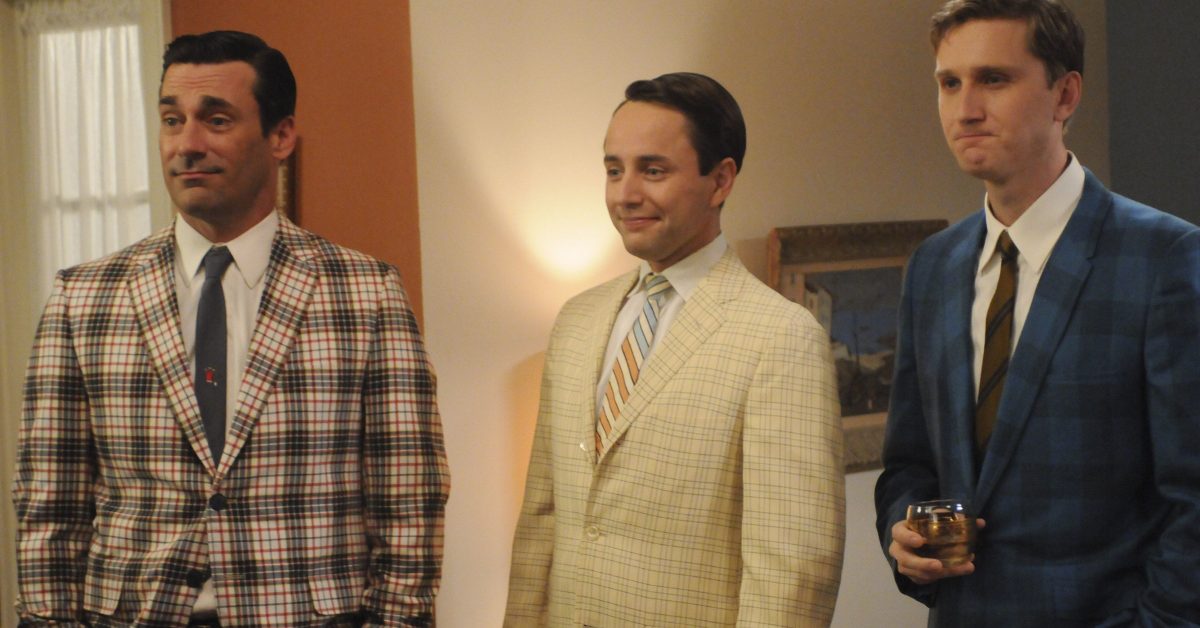
Mad Men is still renowned for its historical accuracy throughout its seven seasons. The show factually covered many major historical events throughout the 1960s. However, even the best historical shows tend to make a few mistakes here and there. Here, we take a look at some of the things Mad Men got wrong during its seven-season run.
1. The divorce rate
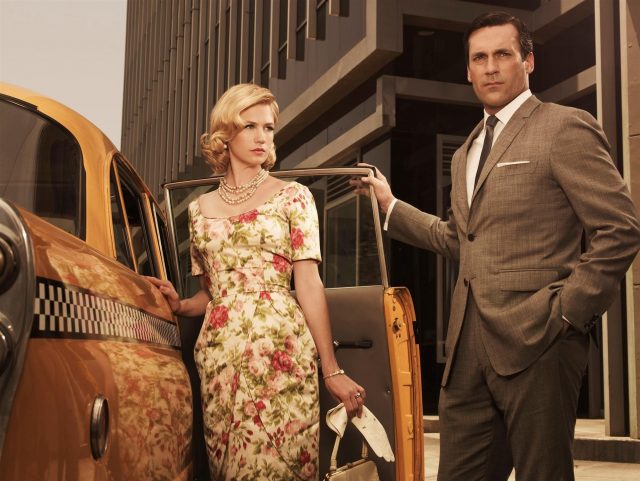
Mad Men is famous for its portrayal of numerous affairs and casual relationships of the people in the ad business. The main character, Don Draper, had too many extramarital affairs to even begin to count. While the portrayal of infidelity may have been more historically accurate, the shockingly high divorce rate of the main characters is not historically accurate.
In the 1950s, a major emphasis was put on the family unit and marriage. At the start of the 1960s, at least, there was a similar sentiment surrounding marriage. In 1960, the divorce rate was just over two divorces per 1000 Americans. In 1965, this average had slightly increased to 2.5 divorces per 1000 people. By the end of the decade in 1969, the divorce rate had risen to 3.2 divorces per 1000 people.
For people higher up the corporate ladder, just like Don Draper and Roger Sterling, divorce rates would be even lower. In other words, divorce was not nearly as common as Mad Men would have its viewers believe.
2. Drinking in the office
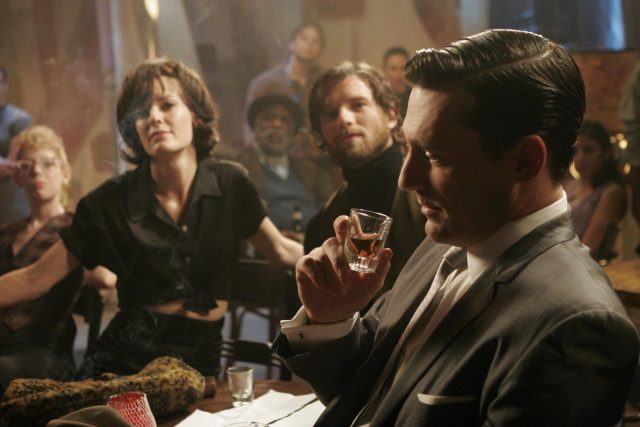
A major component of Mad Men is the casual drinking that happens in the offices of Sterling Cooper. However, although many executive lunches did involve some drinking, there would never be alcohol in senior partners’ offices.
According to Lola Cherson, who worked in PR at Grey and Davis Advertising from the late 1960s to the early 1970s, people would “never get loaded in the office with booze.” However, she does mention that lunches were often long and people could put anything on an expense account.
3. Shea Stadium
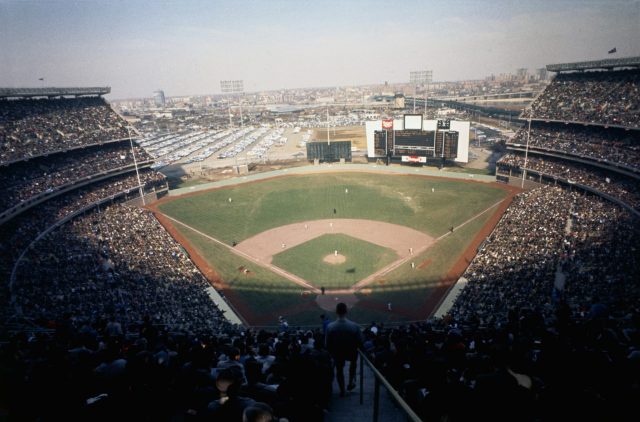
In the second season of Mad Men, the character Kenneth “Ken” Cosgrove, who worked as an account executive at the Sterling Cooper Advertising Agency, asked a girl to a Mets game at Shea Stadium. However, this particular episode was set in 1962.
The issue? Shea Stadium was built in 1964. In 1962, the Mets would have played at the Polo Grounds. However, in the grand scheme of things, this is just a minor historical inaccuracy.
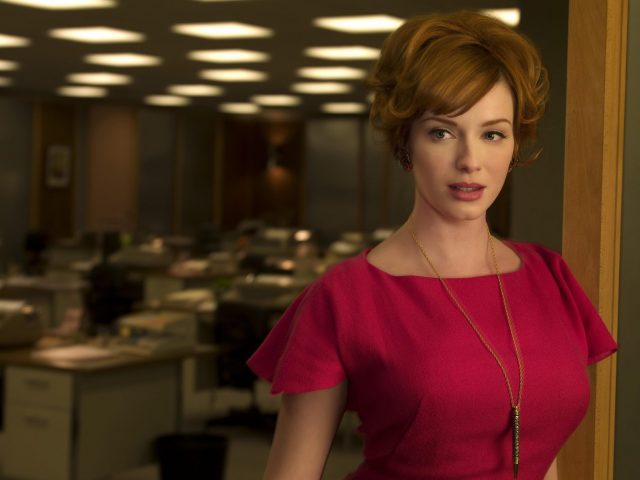
The women in the series, including Peggy, Joan, and Betty, often seem to have their choices limited on the basis of their gender. Although women’s rights began to change throughout the decade of the ’60s, the portrayal of the female office fashion in Mad Men is not entirely historically accurate for the time.
According to Lola Cherson, many of Joan’s outfits would not fly in real advertising agencies. Cherson compares many of the dresses worn in the office to cocktail dresses and states that nobody dressed like that. Similarly, women would never have shown cleavage in the office.
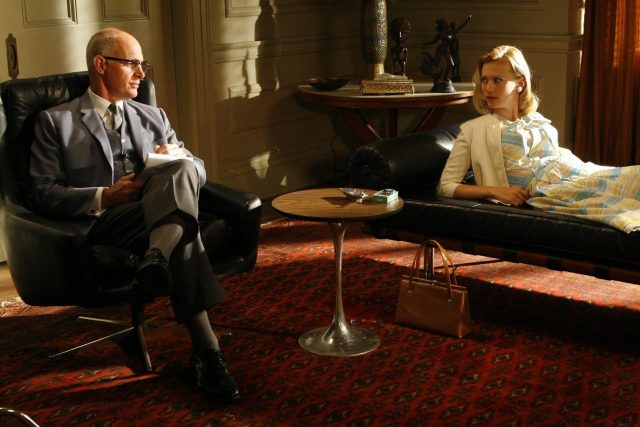
In the first season, Betty Draper begins to see a therapist. During one of her sessions, she tells her therapist that one of her neighbors had a jealous attitude that reminded her of her sorority days at Bryn Mawr. Although Bryn Mawr was an all-female college, there were no sororities associated with the school. Therefore, Betty would have never been in a sorority at Bryn Mawr.
6. Language used throughout the show
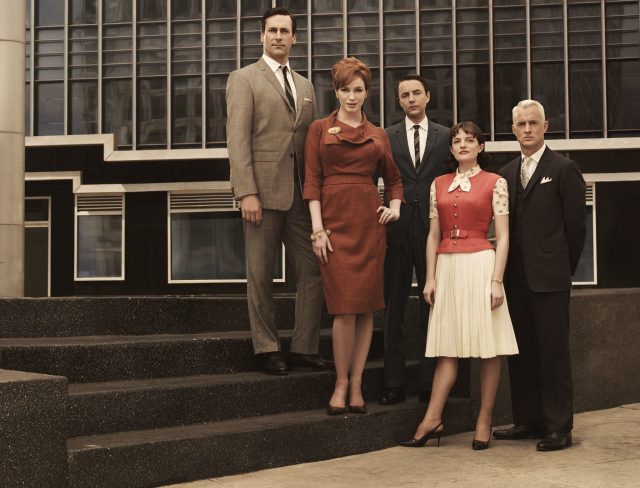
Many of the phrases used throughout the show were not popular in the 1960s. Phrases such as “I’m in a very good place right now” and “I am so over you” were not used in the 1960s. Similarly, in the first season, Joan says “the medium is the message” to Peggy. This quote was made popular by Marshall McLuhan in his 1964 book Understanding Media: The Extension of Man. However, season one was set in 1960, so Joan would have had to coin that phrase herself.
Modern business talk is also apparent in the office. Phrases such “leverage,” “signing bonus,” and “keep a low profile” are used today in a business setting, but they were not used in the 1960s.
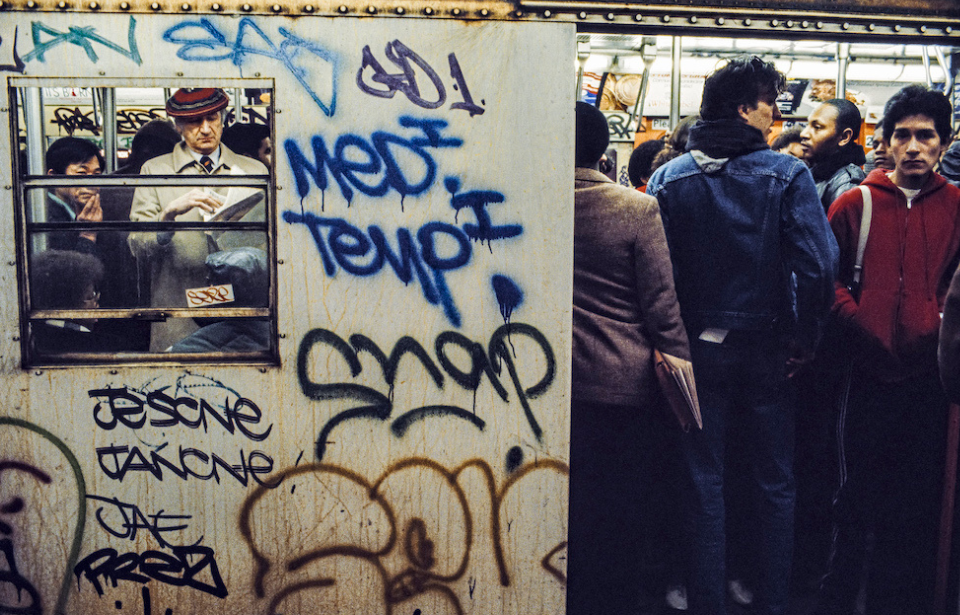
Retro fashion, a musical renaissance, cult classic films – is there anything the 1980s didn’t have? It’s hard to believe how much has changed in 40+ years, and thinking back on the decade has us feeling nostalgic. It was an impactful era for those who grew up during this time and we’ve found photos that highlight some of the biggest fads and historic moments of the decade. From joyful and celebratory to somber and reflective, there’s something for everyone.
Video really did kill the radio star
Before it aired reality shows like Teen Mom, The Real World, and Jersey Shore, MTV played what its name implies: music. It began broadcasting to homes in New Jersey on August 1, 1981, and debuted with the very fitting “Video Killed the Radio Star” by The Buggles.
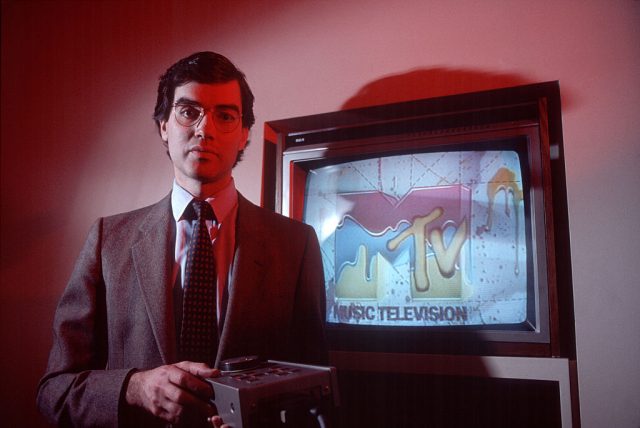
MTV came to define an entire generation with its 24/7 airing of music videos. Those looking to hear the latest hits needed only flip on the TV. While it may no longer air music videos, those from the 1980s will always remember its profound effect on music.
Aerobics fashion
The 1980s had many iconic fashion looks, but the one most associated with the decade is aerobics wear. North American society was experiencing a fitness craze at the time, so it’s only natural the fashion industry took advantage of the increase in the demand for activewear.
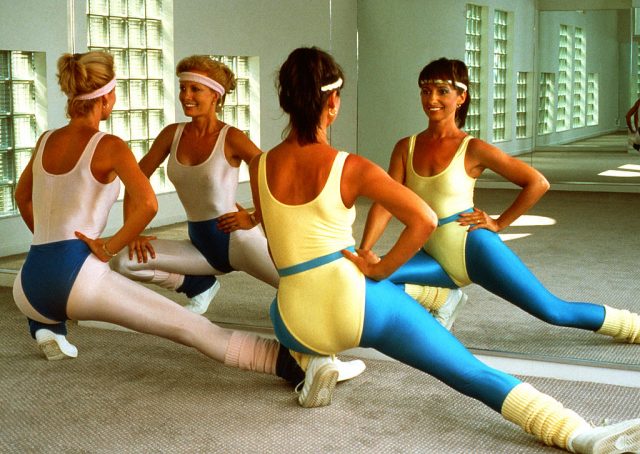
Picture this: you show up to your weekly aerobics class. You’re wearing your neon leotard, matching leggings and leg warmers, white sneakers, and a matching belt to pull the look together. Oh, and your scrunchie. You don’t want your hair getting in your face while you’re working out!
Mount St. Helens erupts
Mount St. Helens in Washington state doubles as both a beautiful wonder of nature and a dangerous volcano. While it has experienced numerous eruptions over the years, the most catastrophic event occurred on May 18, 1980, the result of a 5.1-magnitude earthquake.
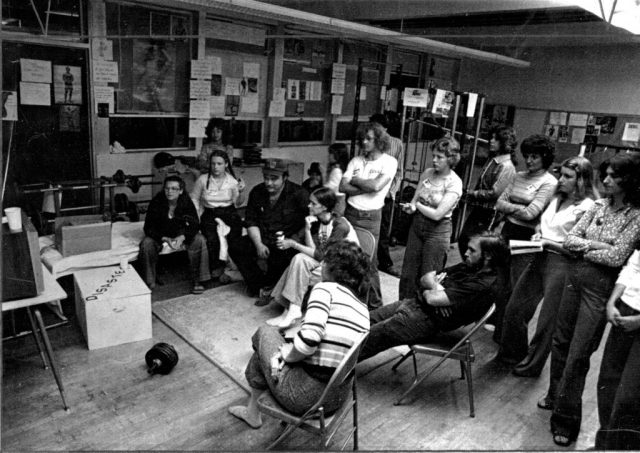
The blast and resulting landslide killed an estimated 57 people and caused hundreds more to evacuate. Damage was extensive, and ash from the eruption spread across a large portion of the northwestern U.S, showing you didn’t have to live in Washington to experience the ill effects.
The fall of the Berlin Wall
In 1961, the German Democratic Republic (GDR) erected the Berlin Wall to keep what it called “Western fascists” from entering East Germany and going against the socialist state. In reality, what it did was stop citizens from defecting to the West.
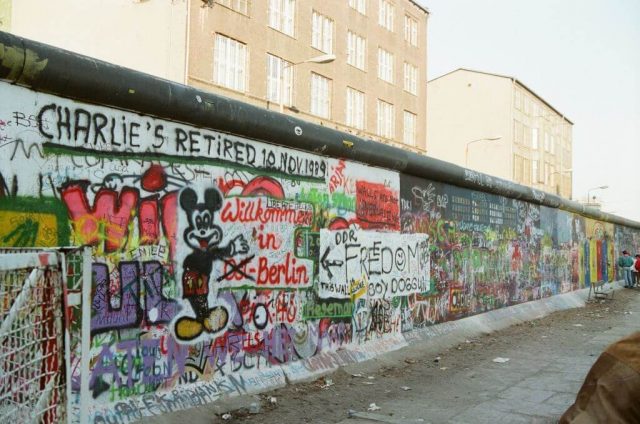
One of the more enduring symbols of the Cold War, it became a canvas for those wanting to share their politically motivated graffiti. When it was announced on November 9, 1989, that citizens of the GDR could once again pass freely through the border, people swarmed the wall. Some even had picks and hammers in hand, so they could begin knocking it down.
The Murder of John Lennon
The Beatles were a hallmark of the music scene throughout the 20th century. During the 1960s, Beatlemania seemingly infected everyone, and while the band split in 1970, there was still love for their music. That’s why the shooting death of John Lennon by Mark David Chapman on December 8, 1980, affected so many.
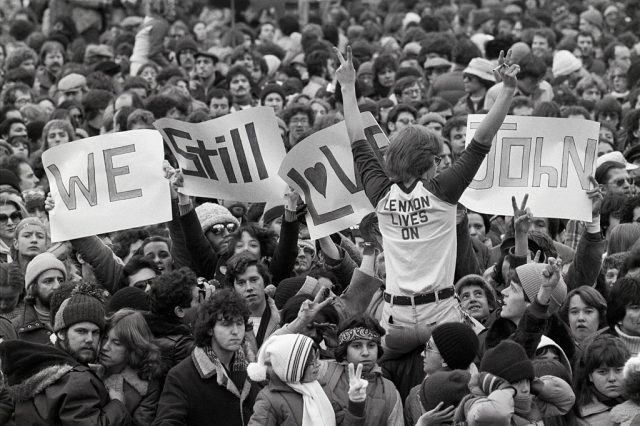
Following Lennon’s death, fans flocked to New York City to pay tribute, and those unable to reach the city held their own vigils. Lennon has since been memorialized by his wife, Yoko Ono, who landscaped a section of Central Park in his honor.
Cabbage Patch Kids were all the rage
The toy on the top of every child’s Christmas wishlist in 1983 was a Cabbage Patch Kid. The cloth dolls were one of the most popular toys of the 1980s and set every sales record within the industry for three years straight. Demand was incredibly high, so much so that stores frequently ran out of stock.
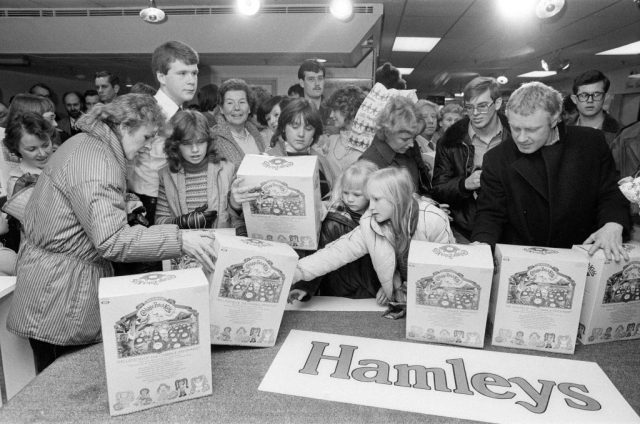
While Cabbage Patch Kids have waned in popularity, there are many who have fond memories of “adopting” and taking care of their very own. A fair few have even passed their love for the toy down to their own children.
Teens loved the Brat Pack
If you were a teenager during the 1980s, odds are you watched a film featuring members of the Brat Pack. The moniker was given to the group of actors who starred in coming-of-age films, the most notable being Molly Ringwald, Ally Sheedy, Judd Nelson, Demi Moore, Emilio Estévez, Anthony Michael Hall, Rob Lowe, and Andrew McCarthy.
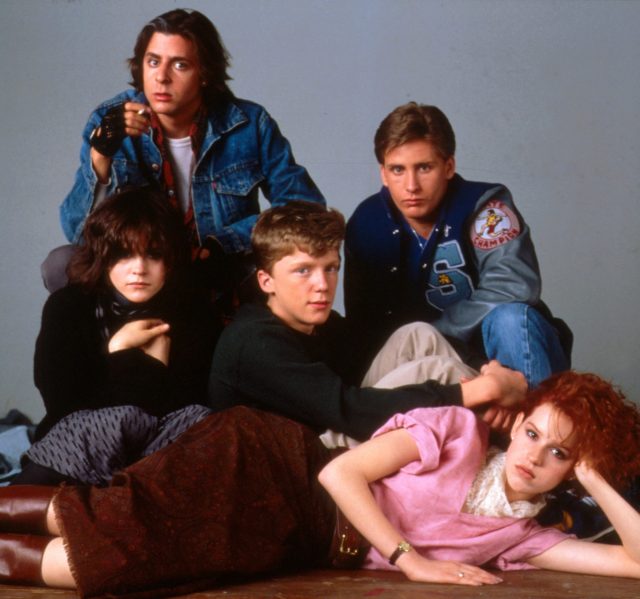
While a large portion of the films received lukewarm reviews upon their release, they have since become cult classics. To this day, the likes of The Breakfast Club, Sixteen Candles, and St. Elmo’s Fire resonate with audiences, and many Brat Pack members have continued to have successful acting careers.
The wedding of the century
The wedding of Prince Charles and Lady Diana Spencer is considered one of the most extravagant in British royal history. Along with the 3,500 guests invited to witness the ceremony at St. Paul’s Cathedral, the wedding was viewed by some 750 million people who tuned in on TV.
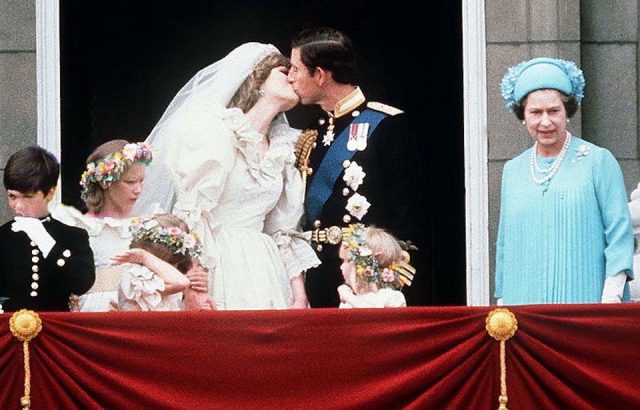
Diana was adored by the British public and it’s no surprise as to why. Her down-to-earth personality and love for her sons made her relatable to everyday citizens. That’s why her unprecedented death in 1997 caused such a shock around the world.
Rubik’s Cube craze
The Rubik’s Cube was invented by Hungarian architecture professor Ernő Rubik in 1974. However, it didn’t experience Western popularity until the start of the new decade after debuting at the 1980 International Toy Fair in New York City.
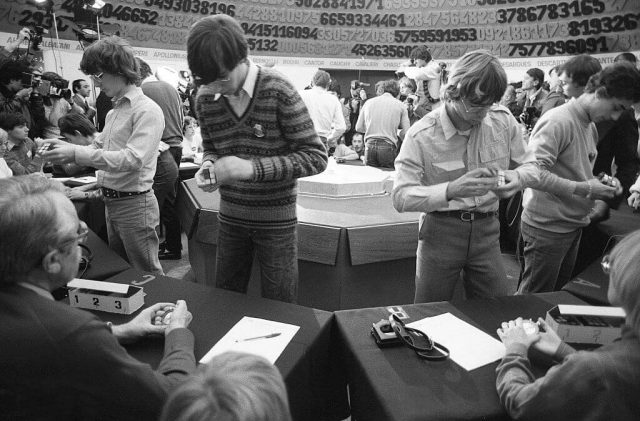
While the Rubik’s Cube craze only lasted a few years, it had a lasting impact on popular culture. Between 1980 and 1983, an estimated 200 million were sold worldwide, and in 1982 the first-ever Rubik’s Cube World Championship was held. The winner, Vietnamese-American student Minh Thai, was able to solve it in just 22.95 seconds!
Pac-Man hits the gaming scene
There are few video games that have had as large a cultural impact as Pac-Man. It was created by game designer Toru Iwatani, and while it experienced moderate success in Japan, its popularity exploded upon its introduction in America.
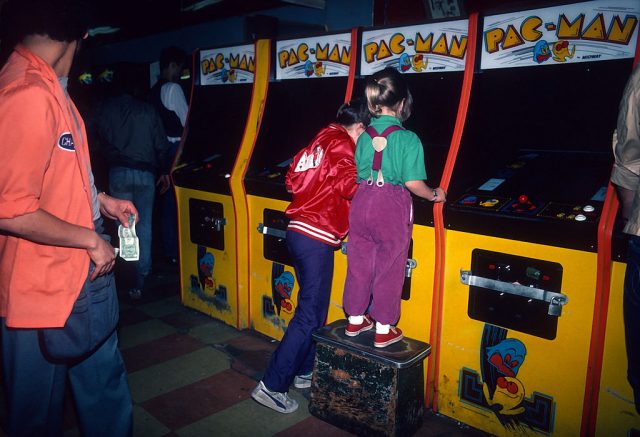
Within a year, Pac-Man sold 100,000 units and an estimated 250 million games were being played each week. It’s widely considered the first marketable game, spawning a host of related merchandise, including lunchboxes, pajamas, t-shirts, and board games. Oh, and who can forget its spin-off, Ms. Pac-Man?
Big hair and lots of partying
The standout music genre of the 1980s was without a doubt hair metal. Mötley Crüe brought it to the mainstream with their tight pants and big hair, and soon bands like Aerosmith and Poison were dominating the airwaves.
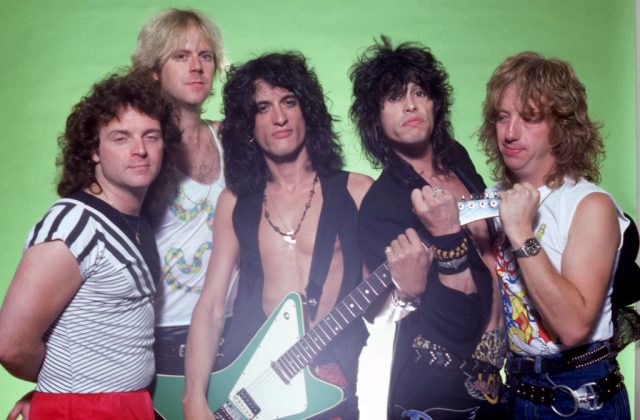
The point of hair metal was to blend traditional heavy metal with pop and punk. It was loud and in-your-face, and many of the most popular bands embodied its spirit off stage. Drug use, a lack of morals, and excess became part of the persona, and while this partying lifestyle was glamorized, it certainly wasn’t healthy.
Dungeons & Dragons caused panic
While first created in the 1970s, Dungeons and & Dragons really found its stride during the 1980s… But not in the way most would have assumed. The role-playing game was considered a nerdy past-time by most, but there were some who believed it to be an occult activity.
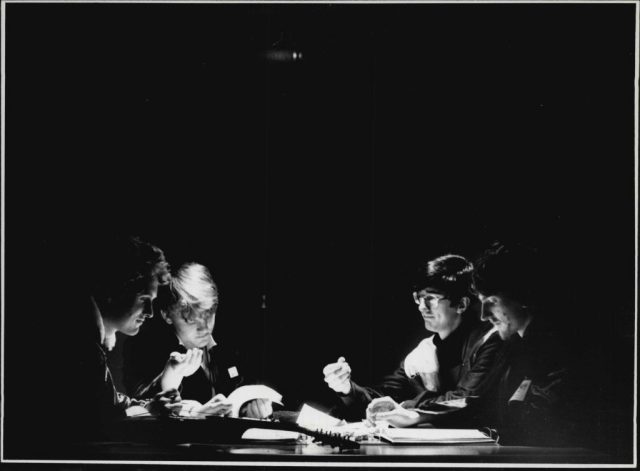
Religious fundamentalists believed Dungeons & Dragons was the work of the devil himself and was only played by the most disturbed of individuals. This was largely fueled by the game’s pseudo-religious characters and mythical beings, but it didn’t stop many from playing it.
10 Funny Facts About George Carlin We Could Probably Say On TV
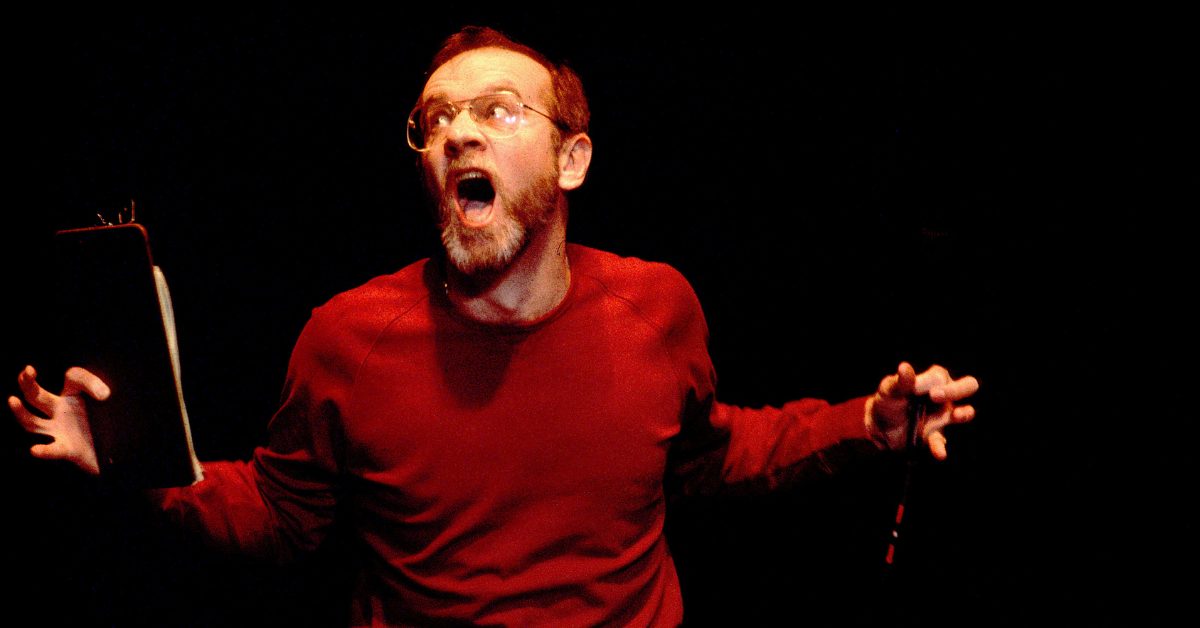
George Carlin could make people laugh, but he also made them think. He chose to remain true to himself and found success in his own way, often challenging societal norms throughout his career. Here are 10 facts that prove George Carlin truly marched to the beat of his own drum.
1. A love of languages ran in his family
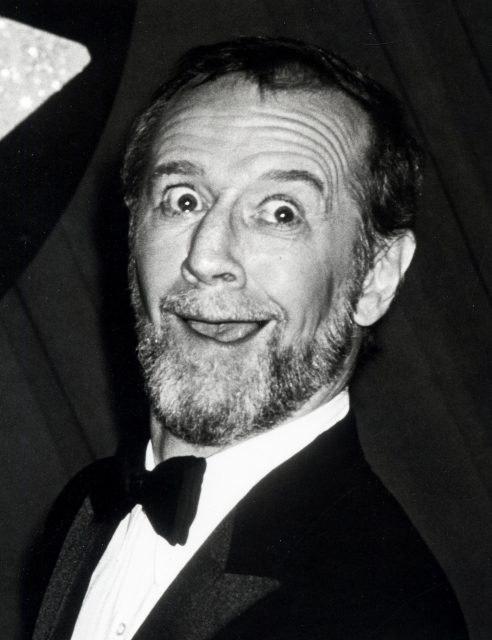
George Carlin, who had a lifelong interest in languages, probably inherited this passion from his father and grandfather. George’s father Patrick Carlin, was the national advertising manager for the New York newspaper The Sun. Patrick Carlin also was an accomplished speaker, winning the nationwide Dale Carnegie public speaking contest in 1935.
Similarly, George Carlin’s grandfather, who was a New York City police officer, wrote out Shakespeare’s tragedies in longhand for fun.
2. He specifically had a passion for swear words
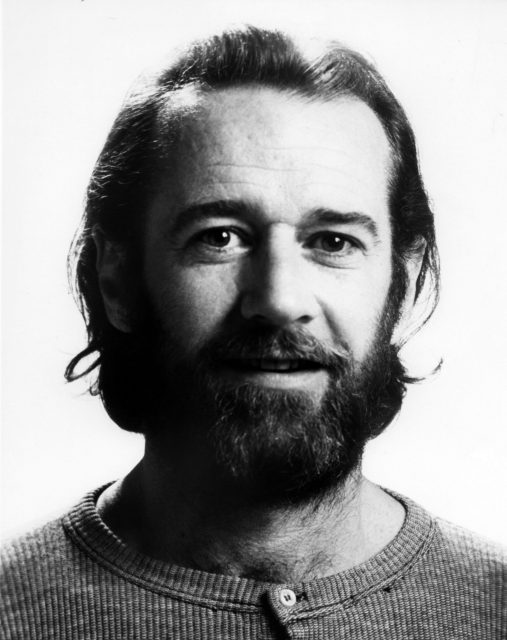
If Carlin had an interest in languages, his true passion lay in obscenities. He used to “collect” colorful curses he heard in his neighborhood by writing them down and carrying the phrases around in his wallet. What he noticed about these phrases and words was that they were all “attractive-sounding things, and funny because they broke all the rules.”
When Carlin was 13, his mother found all these expletive words and phrases in his wallet. He later heard his mother talking to his uncle, saying: “I think he needs a psychiatrist.” Carlin was aware when he wrote these phrases down that they were forbidden and that he shouldn’t use them because he knew they would offend someone.
3. Speaking of swear words, Carlin was once arrested for obscenity
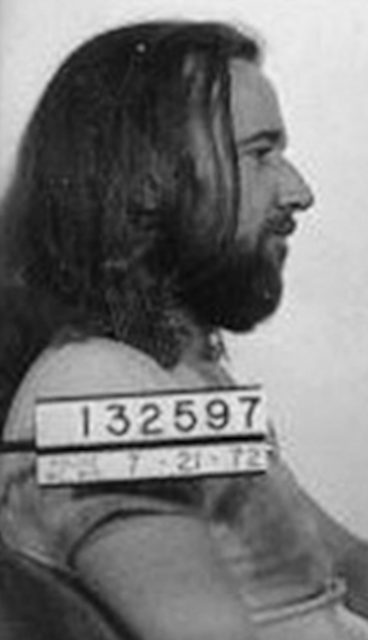
In 1972, Carlin was arrested in Milwaukee, Wisconsin, for obscenity after giving a stand-up performance at the Summerfest festival. After his act, six police officers escorted Carlin away for a verbal offense.
However, Carlin also had baggies of cocaine on him when he was arrested. Much to Carlin’s relief, the police didn’t get their hands on the drugs, so he was only charged with public indecency over the language used in his act.
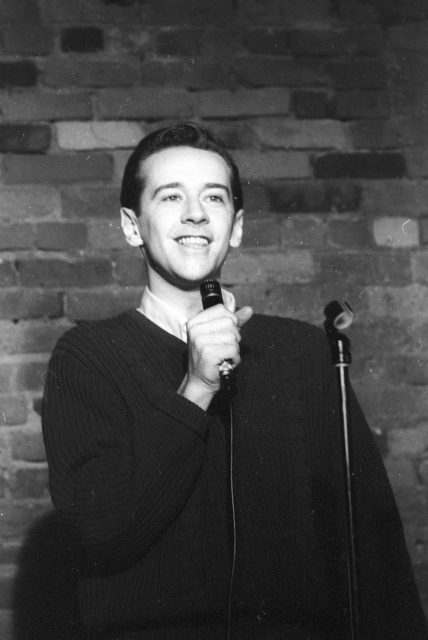
As a young boy, Carlin would attend a summer camp in New Hampshire. According to Carlin, there were two funny kids at this camp — him and someone named “Whacky Wilson.” Carlin would often do stand-up routines, while “Whacky Wilson” would write and perform the comedy sketches.
Fast-forward a couple decades and Whacky Wilson, whose real name is Dave Wilson, is directing Saturday Night Live. In fact, when Lorne Micheals interviewed Carlin about performing the hosting duties on SNL, Carlin stated that he “knew the director.”
5. He doesn’t remember his time hosting SNL, even though he was the first to do it
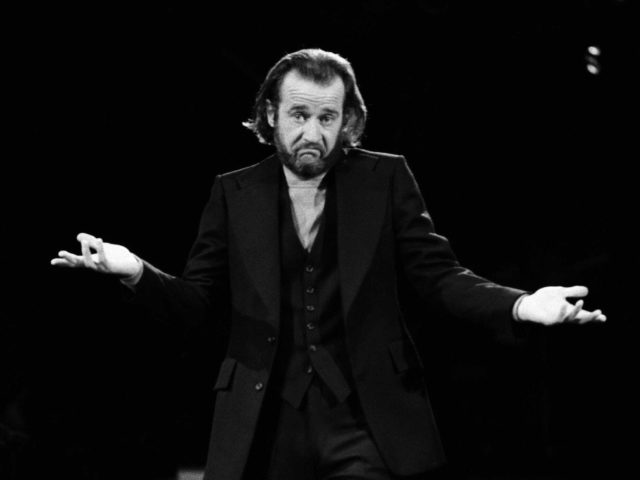
Saturday Night Live first aired on October 11, 1975, and it continues to be one of the longest-running network television programs in the United States.
When Carlin had the honor of being the first host of the television series, he did not participate in any of the sketches; he only performed stand-up and introduced the show’s musical guests. However, Carlin wasn’t able to remember his time hosting the show because he was “loaded on cocaine all week long.”
Despite being the show’s first host, Carlin was never called back to participate in any of SNL‘s anniversary shows. He also went on to be the first-ever host of the show Fridays (1980–1982), which was ABC’s attempted version of SNL.
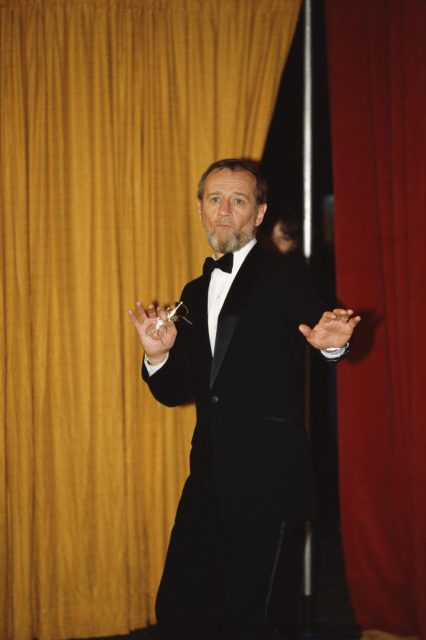
Despite being a hugely successful comedian, Carlin owed a huge amount to the IRS, which took him 18–20 years to pay off. He blamed this debt, which was up in the seven-figure range at times, on his drug abuse which made him neglect his business affairs.
However, according to Carlin, this debt made him become a better comedian. To make money, Carlin was forced to stay out on the road longer performing stand-up shows, which meant he couldn’t pursue a movie career. This time on the road forced him to become a better comedian and writer and helped him better prepare for future engagements.
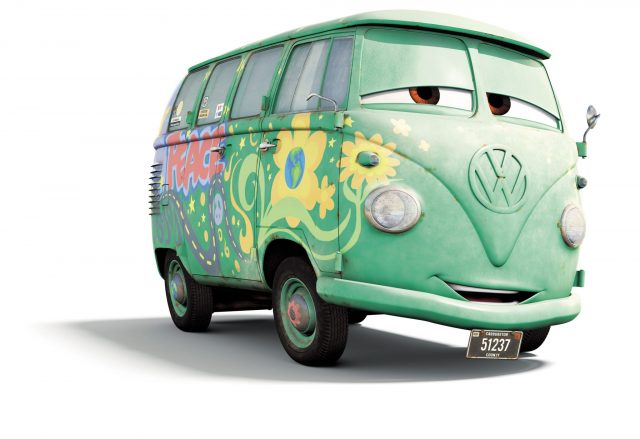
Although George Carlin is best known for his comedy, he also lent his voice to many animated movies and television shows — even replacing Beatle member Ringo Starr as the narrator of Thomas & Friends for five years.
One of Carlin’s last film roles before his death was the voice of Fillmore in the animated movie Cars (2006). In this movie, Carlin’s voice is used for the character of Fillmore — a 1960 Volkswagen Transporter bus, but is also known as a “hippie bus.”
In the movie, the character Fillmore is anti-establishment and radical, no doubt a nod to Carlin’s real life. In fact, Fillmore’s license plate in the movie is George Carlin’s real birthday: 51237 (May 12, 1937).
8. What happens in Vegas…sometimes doesn’t stay in Vegas
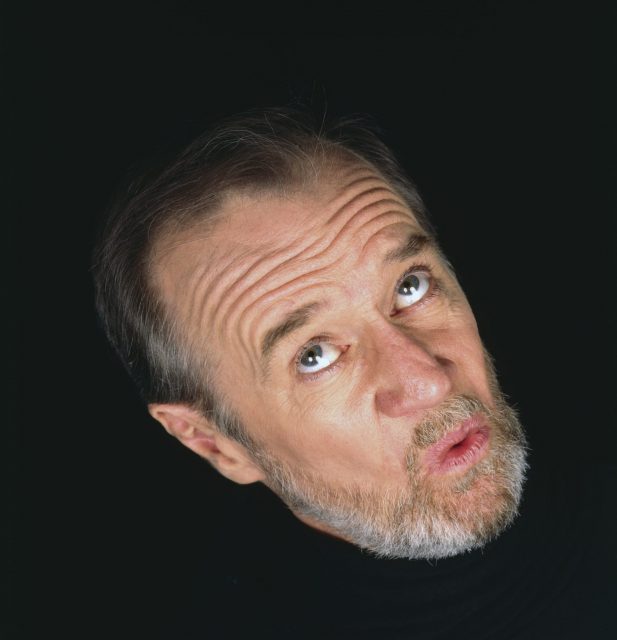
George Carlin performed regularly as a headliner at the MGM Grand in Las Vegas, until his contract was terminated in 2004. After a particularly poorly received set, Carlin went off a bit on his audience, stating he questioned their intellect for giving hundreds of thousands of dollars away to big corporations (along with some other choice words).
However, soon after this tiny tantrum (and perhaps because of it), Carlin entered rehab for his alcohol and painkiller addiction.
9. He was expelled from the high school that Regis Philbin and Martin Scorsese went to
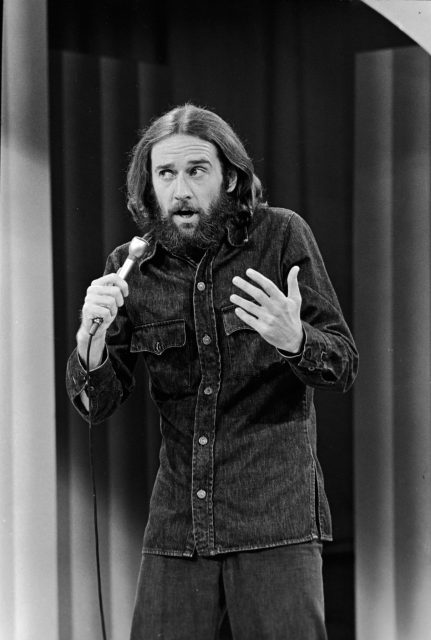
For a period of time, Carlin attended Cardinal Hayes High School in the Bronx. Coincidentally, this high school was also attended by Regis Philbin, Martin Scorsese, and Don DeLillo. However, unlike Philbin, Scorsese, and DeLillo, George Carlin didn’t graduate from Cardinal Hayes High School — he was expelled.
In an interview, Carlin explained that during his time at Hayes, he was failing subjects and running away from home for days at a time. In 1983, Carlin hosted a fundraiser at Hayes high school in honor of Msgr. Stanislaus P. Jablonski, the man who had expelled Carlin.
Carlin kept his act clean, and Jablonski thoroughly enjoyed the jokes. At one point in the act, Jablonski read old detention slips he had issued to Carlin, with one reading “he thinks he’s a comedian.”
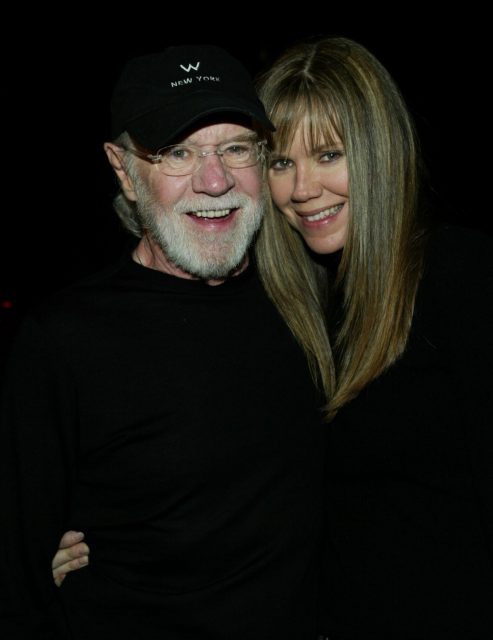
As a child, both Carlin’s mother and aunt worked in the New York office of the Philadelphia Bulletin. They would often show Carlin newspaper comics four weeks prior to publication. Because of this, Carlin would often pretend to “guess” the comics that would appear in the newspaper on the schoolyard, tricking his fellow classmates into thinking he knew the future.
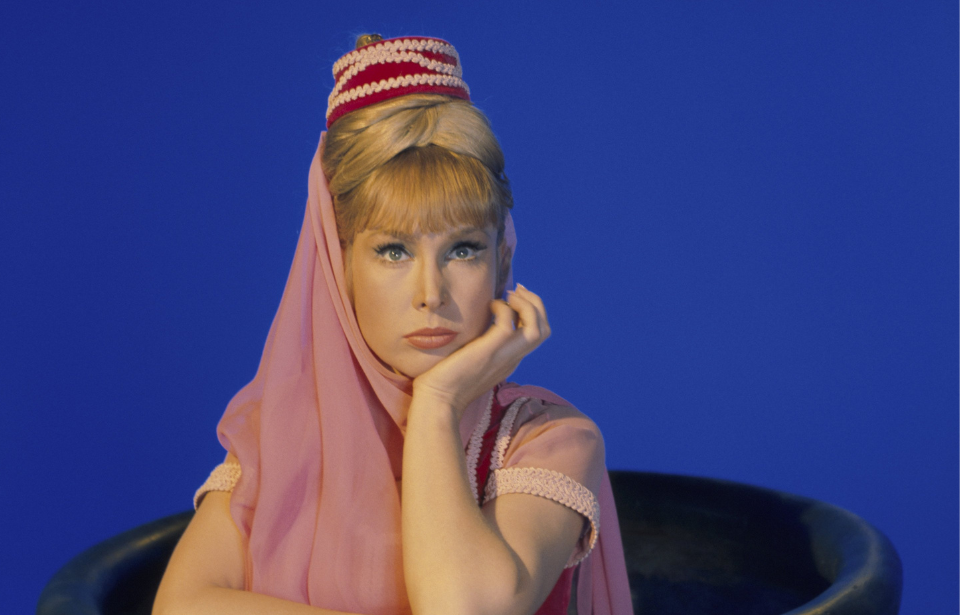
The classic sitcom I Dream Of Jeannie rubbed viewers the right way between 1965 – 70. Barbara Eden played the title character across 5 seasons, with Larry Hagman as military man Tony Nelson.
It may have been a simple and fun show but a lot happened behind the scenes. Read on if you wish to learn some truly fascinating facts about I Dream Of Jeannie… including the time they had to hang out with a lion.
It was inspired by ‘Bewitched’
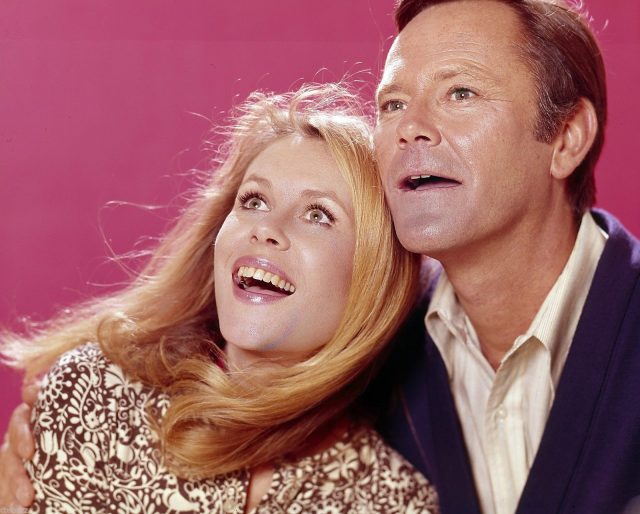
I Dream Of Jeannie wouldn’t exist without Bewitched. The adventures of Elizabeth Montgomery’s nose-twitching Samantha led NBC to hire their own female fantasy figure.
Creator Sidney Sheldon liked the basic concept of the 1964 genie movie The Brass Bottle, so devised his own take. The genie in this case was male and played by Burl Ives. Co-starring was none other than Barbara Eden!
Barbara Eden’s midriff was hidden during the first season
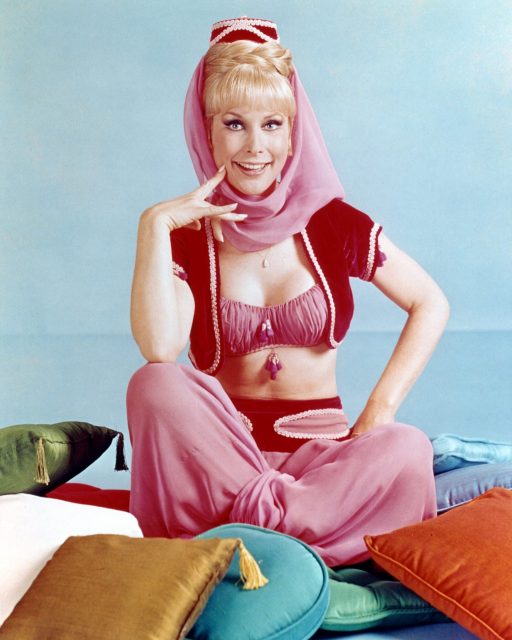
Jeannie’s exposed torso is a well-remembered part of the show. But for the first season, it was noticeable by its absence.
Why? Eden was expecting. According to Mental Floss, she “confirmed her pregnancy on the very day that I Dream Of Jeannie was picked up.” The team needed to obscure her bump in various ways, “including adding several extra veils to her Jeannie costume.”
Once son Matthew was born the belly was out, though the outfit stopped short of her navel. Such brazenness was forbidden in Hollywood at the time!
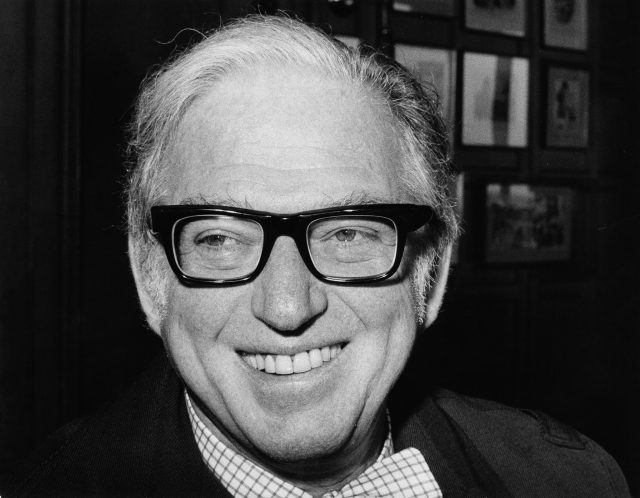
Before Jeannie, Sidney Sheldon won an Oscar for his screenwriting (The Bachelor and the Bobby-Soxer, 1947). He co-wrote the 1948 classic Easter Parade, starring Judy Garland and Fred Astaire.
Sheldon also did the screenplay for Annie Get Your Gun (1950). Many of his musicals were staged on Broadway and on the big screen.
Larry Hagman hit the bottle… and we don’t mean Jeannie’s bottle
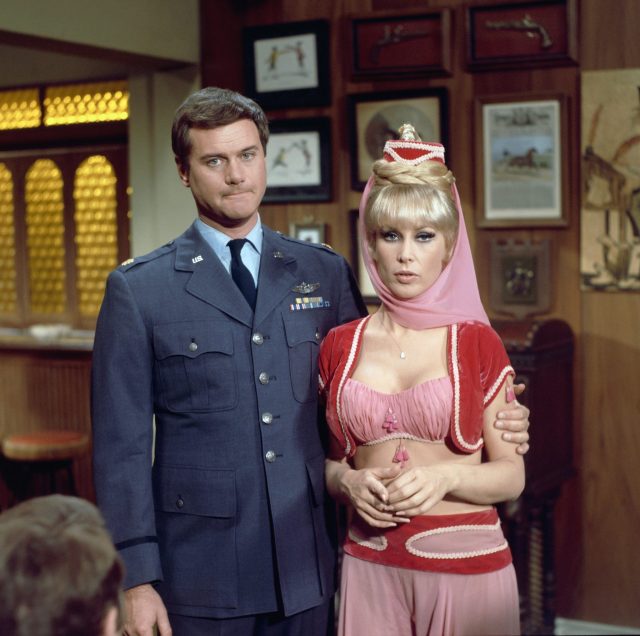
Hagman was far removed from the strait-laced Tony Nelson. In fact, his nickname outside work was the “Mad Monk of Malibu.”
Eden described some raucous behavior in the 2011 memoir Jeannie Out of the Bottle (with Wendy Leigh). Her co-star reportedly disliked what he saw as mediocre scripts. Champagne and other substances were used to ease the pain.
“Those on the set recall Hagman showing up to filming wearing a gorilla suit once,” writes Past Factory, “and bringing an ax to the studio another time.” This weapon, possibly a prop, was allegedly wielded in front of some nuns.
Eden later revealed that visitors were banned following an incident involving 10 nuns. “Larry takes one look at the nuns, grabs an axe … and swings it around his head so ferociously that he could easily have killed someone,” Eden recalled to CheatSheet. “As he swings it, he lets out a torrent that includes every single foul swear word I’ve ever heard, and some I haven’t — right in the stunned nuns’ faces.”
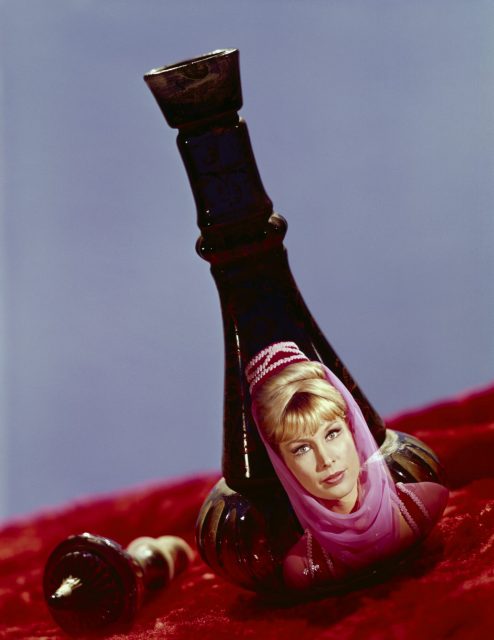
The famous vessel Jeannie emerges from is actually a re-purposed bottle of Jim Beam whiskey bourbon. No wonder the character was so intoxicating.
Is Jeannie a genuine genie? Even the show isn’t clear
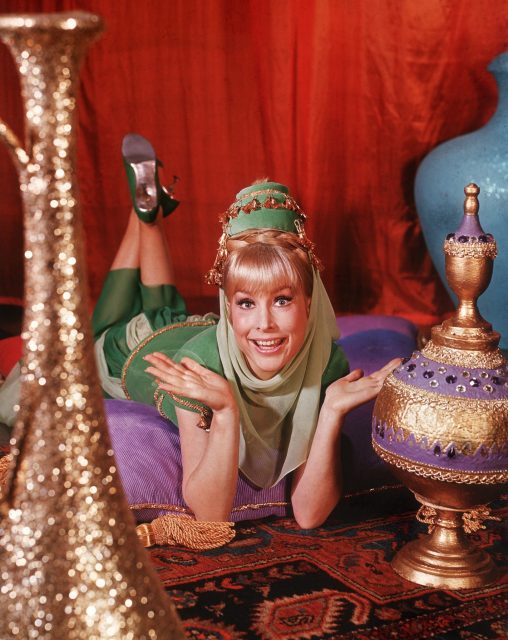
In the days before fandom ruled the roost, TV shows weren’t so hot on story continuity. Case in point – Jeannie’s status as a human.
While introduced as a mortal woman turned into a genie by the Blue Djinn, later seasons made Jeannie a full-blooded wish granter.
The most detailed description comes in print. Al Hine’s 1966 novel of the series states she is a genie called Fawzia and lived in Tehran hundreds of years ago with her family.
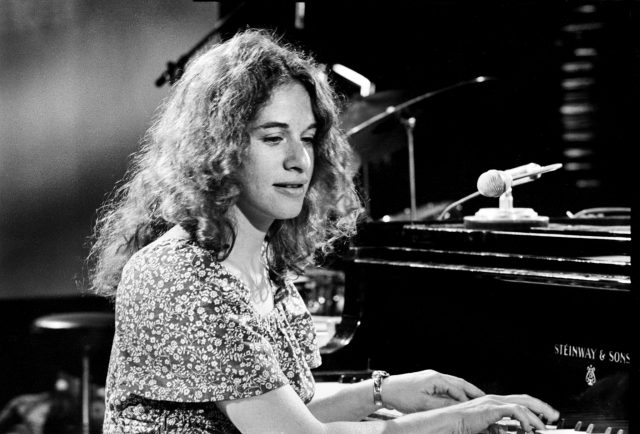
I Dream of Jeannie’s famous theme was added in the second season. Sidney Sheldon wanted to replace its jazz waltz predecessor, composed by Richard Wess.
However, the show could have had a theme written by music legend Carole King! She and partner Gerry Goffin submitted a track. For an unknown reason, Sheldon never put it on air.
Barbara Eden Reunited with Larry Hagman on ‘Dallas’
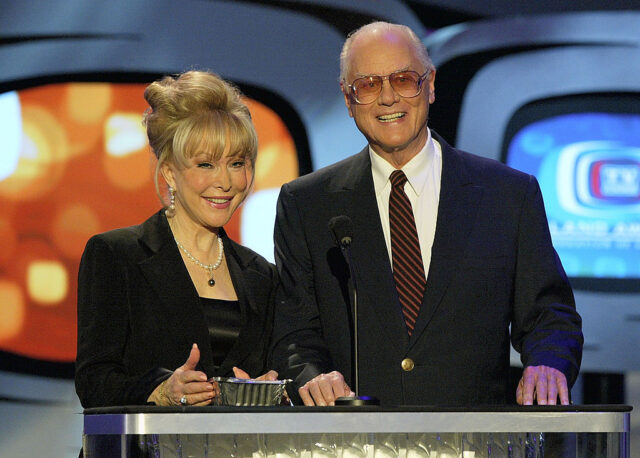
Eden and Hagman continued their working relationship after I Dream Of Jeannie had the stopper put on it. A year later they starred in the TV movie thriller A Howling in the Woods. The cast included Vera Miles (Psycho) and future Cagney & Lacey star Tyne Daly.
However, a more high-profile reunion happened during Hagman’s small screen smash in Dallas. Now world-famous for playing J.R. Ewing, the actor welcomed his former genie back as the astonishingly named Lee Ann De La Vega.
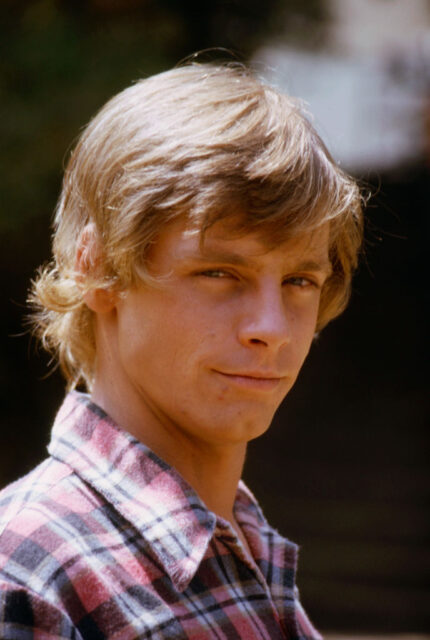
Did you know Jeannie met Luke Skywalker? This wasn’t some crazy crossover by the way but a short-lived cartoon from the iconic Hanna-Barbera studio.
A few years prior to picking up a lightsaber, Mark Hamill voiced Corey Andrews, Jeannie’s new master. In line with the younger audience, Andrews was a hip young surfer.
Jeannie herself underwent a revamp. Her hair color changed and Julie McWhirter took over the role from Barbara Eden. Why? Blame Scooby-Doo. The New Scooby-Doo Movies featured star names such as Dick Van Dyke, Sonny & Cher, and Phyllis Diller. When the fun was over the money ran out. Maybe this was the reason Hamill multi-tasked and sang the Jeannie theme song?
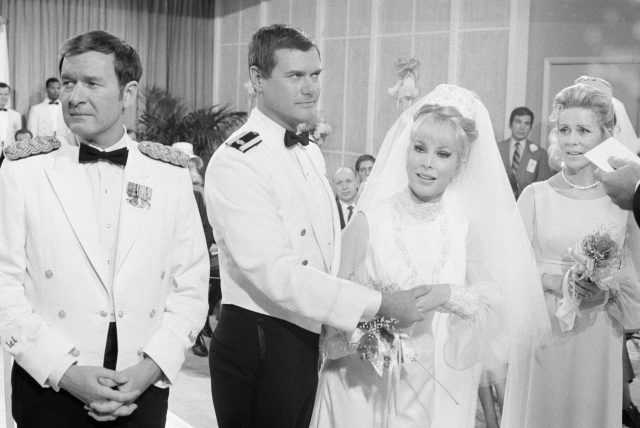
TV shows “jump the shark” when past their prime, as a notorious episode of Happy Days demonstrated.
For the final season of I Dream Of Jeannie, genie and master tied the knot. The move wasn’t welcomed by viewers or the stars themselves. Despite the far-out premise, Eden and Hagman took their character motivation seriously.
A network stunt where the actors posed for wedding snaps made things worse. Country Music Family writes: “according to the show’s mythology, genies can’t be photographed, yet they still had a professional photographer at the wedding.”
This development was widely seen as a low point. I Dream Of Jeannie vanished in a puff of smoke soon after.
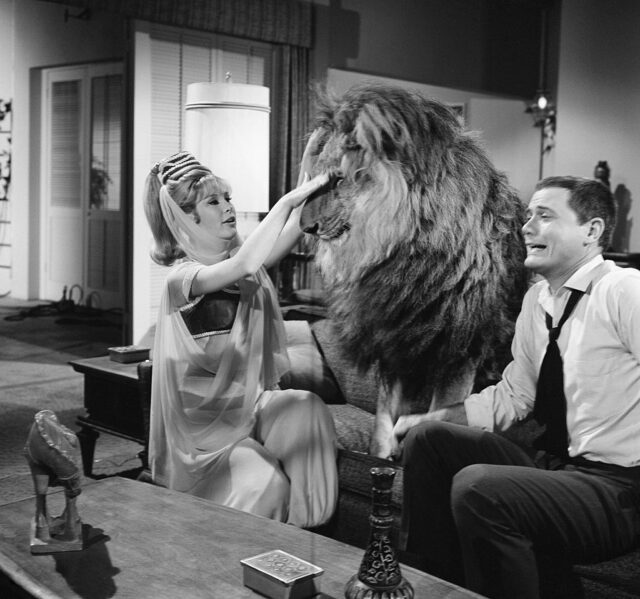
Sitting on a panel at a Christmas Con held in Kansas City, Eden remembered the time she worked with a lion on the set of the show. She had already worked with lions a couple of times on various films, so she felt more comfortable working with the animal. She was encouraged to go over and “make friends” with the lion but to remain cautious.
Eden and the cat were getting along swimmingly, unlike her co-star, Larry Hagman. When she tried to introduce him to the lion, he wasn’t having it. “I went over to Larry in his dressing room. I said, ‘Larry, we have to go make friends with the lion,’” Eden explained. “And he said, ‘What? I’m not making friends with any blankety-blank lion!’ And he walked away. I go, ‘Okay.’”
At this point, Eden basically had the lion to herself as she continued to bond with the creature until they started filming. “They’d put a bowl of raw meat right here by my thigh and he’d eat the meat and he’d look around. He’s very happy, very happy,” she said. “Then they brought in Larry.” As soon as they brought Hagman in, Eden said, the lion had become agitated and made sure its feelings were known.
“The lion was brought in and he ate the meat, looked around, looked at me, looked at Larry, and, ‘ROAR!’” she recalled. “Larry, I wanna tell you, he was off the set. Not only was he off the set, the cameraman, the whole crew. They broke the camera. And I had an 800-pound lion in my lap, purring. They purr, just like kitty-cats!”



